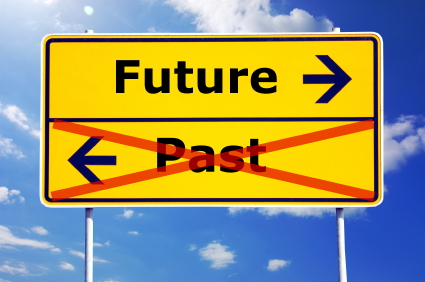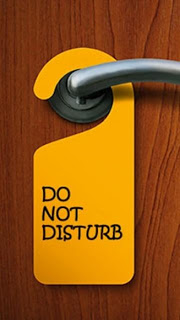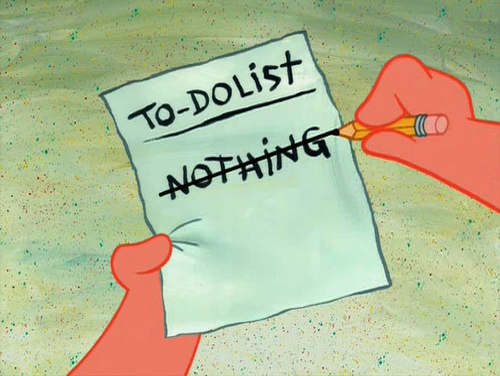Category Archives: Information Overload – Coping Strategies
-
Limiting: A Simple Coping Strategy for Information Overload
by SebJul 17, 20130 CommentWe’re pressing on with our exploration of the various strategies for coping with information overload, and we’ve reached one that is particularly close to our hearts: limiting.
While we feel honoured to live in a world where we have instant access to all the information we could ever need, we also feel that from time to time the amount of information we receive is just too much, and that to really benefit from it we need to impose some limits.
“A wealth of information creates a poverty of attention.” — Herbert A. Simon
We deal particularly with proactive data feeds, which include e-mail newsletters, RSS feeds, or social media feeds, and our concern is that many of these target too broad an audience with information that is too diverse. This means that users need to work harder to find the pieces of information that are relevant to them.
At SpecificFeeds our vision is to counter these broad data feeds with precise, relevant, clean information streams that are … well … specific. This is our way of helping you limit the volume of information you are bombarded with each day and get out the golden nuggets of information into a feed that you will actually benefit from.
Photo Courtesy of http://www.ehow.com/how_6304594_tell-discovered-gold-nuggets.html and Roger at fotalia
Tips for Limiting Information
Of course there are other ways of limiting the volumes of data that you receive daily, and the following tips should also point you in the right direction.
- Decide what is really relevant to you. Many of us spend a huge amount of time reading, checking, or otherwise processing information that will actually have very little impact on our lives. A simple example is checking the weather report every day, which is a pretty common activity. If you happen to be planning a barbecue or other outdoor event, this could be valuable information, but if you’re going to be sitting in an office for the next five days, is the weather forecast something you really need to check every day? Decide what sources of information are really relevant to you and discard those that aren’t.
- Let others handle their own information. How often do you waste half an hour reading the attached documents of an e-mail somebody copied you into? If you’re copied on a message, it makes sense to scan it and be aware of the content, but the message needs to be actioned by the person that it is actually addressed to. Let them deal with the content of the e-mail and involve you if it’s necessary. Similarly, if you manage a team, you need to empower your team members to deal with their own information and only pass items on to you that they feel you really need to be aware of.
- Create a selection criteria. There’s so much information out there that it can be hard to know which pieces or sources to pay attention to and which ones to discard. One solution is to create your own selection criteria. Sample criteria could include:
-
How to Prioritize: a quick, yet comprehensive guide
by SebMay 21, 2013"Prioritizing is the answer to time management problems – not computers, efficiency experts, or matrix scheduling. You do not need to do work faster or to eliminate gaps in productivity to make better use of your time. You need to spend more time on the right things…"
— C. Ray Johnson, Chairman and CEO of Underground Technology Inc., and Author of CEO Logic: how to think and act like a Chief Executive
The ProblemIf you’re a decently-informed person, you should recognize the ubiquity of the phrase “get your priorities straight.” Who knows how many sayings there are on the matter, but it’s fairly agreed upon that having priorities is important, and setting them is even more important.
If you’re not familiar with the Pickle Jar theory, here is the link. The theory has circulated Facebook widely and was popularized as a story of a professor teaching his students a lesson: know what’s important in your life and set your priorities accordingly. Devote our time proportionally to the most important matters in our lives. Not the small matters.
Well, it’s easy to talk about setting our priorities, but how exactly do we do that? How do busy, pressured, and stressed people prioritize and find time for the important things when the small things demand so much of our time and attention?
The Solution
It’s easy. You make a daily list of tasks you need to get done and cross them off when you get them done. The goal? Cross off every item by the end of the day.
Since you’re still reading, I can safely assume that this hasn’t worked for you.
Prioritizing is essentially making that list and crossing it off. But it’s also much more than that. It’s a powerful tool if used correctly, and terribly confusing if not. It requires discipline and practice. And it requires planning and thought, which takes more time out of your day–time which you need.
However, you must take that time to prioritize. It’s part of the planning process, and failing to do so could cost you more time in the future. In fact, I insist you start taking 10 minutes at the end of each day to plan and prepare for the next. It’s good practice.
To prioritize correctly, you must take time to know yourself. Figure out how you work. How disciplined are you? When do you work best–mornings, evenings? Do you need coffee or exercise before you start your day? Are you realistic, pessimistic, or optimistic? Do you need somebody–a friend or spouse–to help keep you disciplined and accountable for what you do and don’t get done?
These are necessary questions, because they will help define what you think you can get done and by when. They will also help dictate what method of list-making will help you best.
-
Shifting: Altering Our Perception of Information Overload
by SebNov 13, 2013
It’s time for the next part in our series on strategies for coping with information overload, and this week we’ll be taking a look at ‘shifting’. Defined as ‘changing one’s perception of situation by accepting it as part of the job,’ shifting means accepting that the world we live in is fast-paced and data-rich, and that information overload is a fact of life.
Whatever industry you work in, and whatever your position is, you will have to cope with information overload. Employers expect us to perform a variety of tasks at lightning speed and to deal with whatever is thrown our way. Failure to keep up in the workplace can have serious consequences.
-
Filtering the Flood of Information
by SebDec 17, 2013

So we’ve reached the end of our series on dealing with information overload. Our final post will examine one of the most established strategies: filtering. Defined as paying attention to just the most important and helpful information, and leaving aside any other sources, filtering is something we do every day, consciously or subconsciously.
Filtering can be viewed in two ways, depending on the flow of information you are dealing with. It can be seen as a process by which you search for information that is useful to you, or a process by which you block information that is not useful to you. Either way, filtering is a necessary tool for sifting out the useful from the useless.
-
Escaping the Information Deluge
by SebAug 14, 2013Although we are looking at eleven strategies for coping with information overload, they aren’t necessarily suitable to use all at once. This week’s strategy may be seen as the opposite of multitasking and is known as escaping. It is the ideal strategy to adopt when you need to cut out all distractions and focus 100% on one immensely important task.

Photo Courtesy of http://btclounge.blogspot.ch/ Escaping is eliminating disturbances by psychologically or physically limiting disruptions from the outside world.
Disruptions and distractions cost time and productivity. Every time you are distracted, you lose focus on the task at hand, making you lose valuable time. You may even end up repeating finished work.
However, distractions have a far greater impact than we realise. Chronic disruptions in the workplace make it difficult to concentrate, think deeply, and be creative. This causes work place conflicts, inadequate performance, missed deadlines, poor customer relationships, and ultimately lost business.
The variety of distractions we are exposed to in the workplace are growing with the digital age. Along with traditional distractions, such as ad hoc meetings and talking with colleagues, we now have e-mail, text messages, instant messaging, and social media updates vying for our attention.
A 2011 survey on electronic distractions in the workplace conducted by Harmon.ie discovered that:
- 45% of employees only work for 15 minutes or less before getting interrupted
- 53% of employees waste an hour a day due to all types of distractions
- 57% of distractions are electronic, for example e-mails or instant messages
- 43% of distractions are personal, for example colleague queries or phone calls
The survey also showed that employees were likely to become distracted while switching between different applications and screens on their computer. 45% of employees said they usually had at least six items open simultaneously, and switched between all of these.







